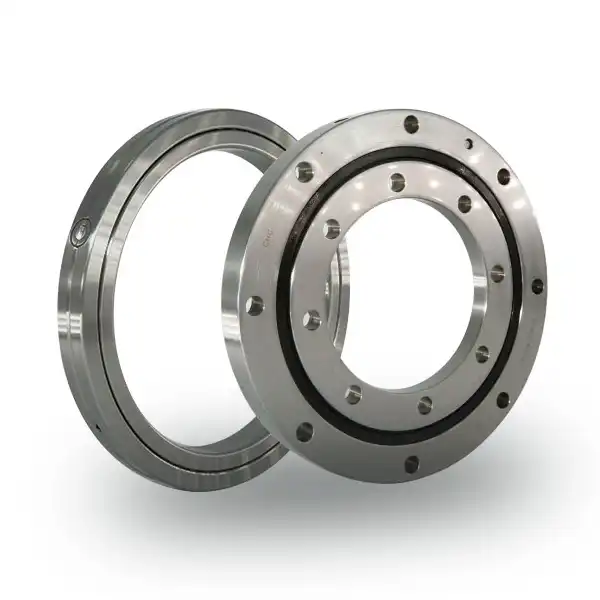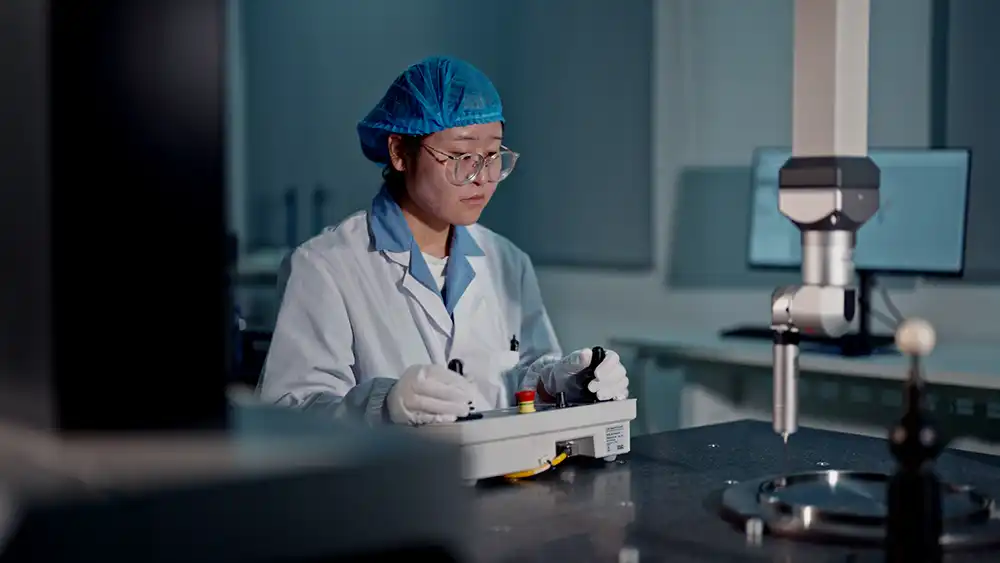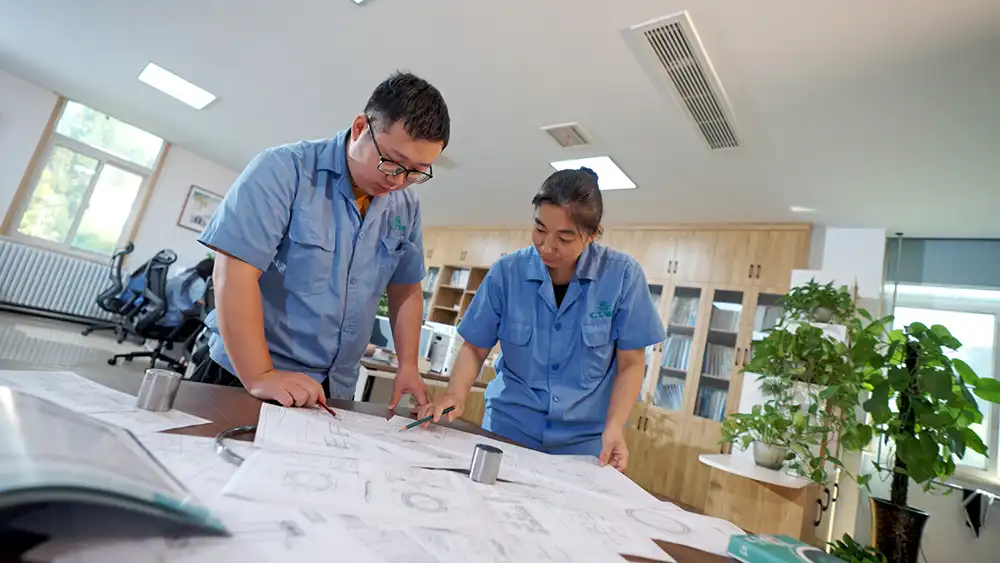How Do XSU Cross Roller Bearings Improve Precision In Machinery?
XSU Cross Roller Bearings represent a significant advancement in precision engineering, offering unparalleled accuracy and stability in various industrial applications. These specialized bearings feature cylindrical rollers arranged in a crossed pattern between inner and outer rings, enabling them to handle complex loads from multiple directions simultaneously. Their unique design and construction make them essential components in high-precision machinery, where even minimal deviations can significantly impact performance and output quality. In modern manufacturing environments, where precision tolerances are measured in microns, XSU Cross Roller Bearings have become indispensable for achieving the highest standards of accuracy and repeatability in motion control systems.

What makes XSU Cross Roller Bearings different from conventional bearings?
The fundamental distinction of XSU Cross Roller Bearings lies in their innovative design and superior load-handling capabilities. Unlike conventional bearings that typically handle either radial or axial loads independently, XSU Cross Roller Bearings excel at managing combined loads in multiple directions. This unique characteristic stems from their perpendicular roller arrangement, where each roller is positioned at right angles to its adjacent rollers, creating a crossed pattern that enhances load distribution and stability.
The bearing's construction involves precision-manufactured rollers that maintain consistent contact with both the inner and outer rings throughout their rotation. This design minimizes friction while maximizing load capacity, resulting in smoother operation and reduced wear. The rollers are separated by specially designed spacers that prevent roller-to-roller contact, eliminating potential friction points and ensuring optimal performance even under heavy loads.
One of the most significant advantages of XSU Cross Roller Bearings is their exceptional moment load capacity. This characteristic makes them particularly valuable in applications where tilting moments need to be accommodated while maintaining precise positioning. The crossed roller design provides superior rigidity and resistance to deflection, ensuring that the bearing maintains its accuracy even under complex loading conditions.

The manufacturing process of XSU Cross Roller Bearings involves sophisticated precision engineering techniques. Each component is manufactured to extremely tight tolerances, often using advanced CNC machinery and specialized grinding processes. The rollers themselves undergo rigorous surface finishing procedures to achieve optimal roundness and surface roughness characteristics, which are crucial for smooth operation and long service life.
Furthermore, these bearings incorporate advanced sealing technologies that protect against contamination, extending their operational lifespan and maintaining their precision characteristics. The materials used in their construction, typically high-grade steel with superior hardness and dimensional stability, undergo stringent heat treatment processes to ensure consistent performance under varying conditions. This combination of design features and material properties makes XSU Cross Roller Bearings particularly suitable for applications requiring high accuracy and reliability.
How does temperature affect the performance of XSU Cross Roller Bearings?
Temperature management plays a crucial role in the performance and longevity of XSU Cross Roller Bearings. These precision components are engineered to maintain their dimensional stability and operational characteristics across a wide temperature range, but understanding their thermal behavior is essential for optimal application.

At their core, XSU Cross Roller Bearings are designed with specific thermal expansion properties in mind. The materials used in their construction, primarily high-grade bearing steel, exhibit carefully controlled thermal expansion coefficients. This characteristic ensures that the bearing maintains its critical clearances and preload settings even as operating temperatures fluctuate during normal machine operation.
The bearing's response to temperature changes is particularly relevant in high-precision applications. When temperatures rise, the bearing materials expand uniformly, thanks to their homogeneous composition and precise manufacturing tolerances. This uniform expansion helps maintain the bearing's geometric accuracy and running precision. Conversely, when temperatures decrease, the contraction occurs evenly across the bearing components, preserving the crucial operating clearances.
In industrial applications where temperature variations are significant, XSU Cross Roller Bearings often incorporate innovative design features to manage thermal effects. These may include specialized materials with lower thermal expansion coefficients or design elements that compensate for thermal growth. Some advanced applications utilize active temperature control systems to maintain optimal operating conditions.
Modern XSU Cross Roller Bearings often incorporate advanced lubricants specifically formulated to maintain their viscosity characteristics across a broad temperature range. These lubricants help ensure consistent operation by reducing friction and dissipating heat effectively. The bearing's design also includes features that promote efficient heat distribution, preventing localized hot spots that could compromise performance or lead to premature wear.
What are the maintenance requirements for ensuring optimal XSU Cross Roller Bearing performance?
Maintaining XSU Cross Roller Bearings requires a systematic approach to ensure their continued high-precision performance and extended service life. The maintenance protocol encompasses several critical aspects that must be carefully managed to preserve the bearing's inherent accuracy and reliability.
Regular monitoring of operating conditions forms the foundation of effective maintenance. This includes tracking parameters such as running temperature, vibration levels, and rotational smoothness. Modern predictive maintenance techniques often employ sophisticated monitoring systems that can detect subtle changes in bearing performance before they develop into significant issues. These early warning systems help prevent unexpected downtime and maintain optimal operating conditions.
Lubrication management is perhaps the most critical aspect of XSU Cross Roller Bearing maintenance. The type, quantity, and condition of lubricant directly impact bearing performance and longevity. Regular lubrication schedules must be established based on operating conditions, load characteristics, and environmental factors. The lubricant should be carefully selected to match the bearing's specifications and application requirements, considering factors such as speed, load, and temperature range.
Implementation of proper mounting and alignment procedures is crucial for maintaining bearing performance. This includes using appropriate tools and techniques during installation, ensuring correct preload settings, and verifying alignment accuracy. Regular checks should be performed to confirm that mounting conditions remain within specification, as misalignment can lead to premature wear and reduced precision.
Periodic inspection and cleaning procedures are essential to prevent contamination and ensure proper operation. This includes checking for signs of wear, examining seals for damage, and verifying proper alignment. The inspection process should also include assessment of mounting conditions, as proper mounting is crucial for maintaining the bearing's precision characteristics.
Contamination control measures must be implemented and maintained throughout the bearing's service life. This includes proper sealing arrangements, regular cleaning of the surrounding area, and careful handling during maintenance procedures. The introduction of foreign particles can significantly impact XSU Cross Roller Bearing performance and accelerate wear, making cleanliness a critical factor in maintenance protocols.
Luoyang Huigong Bearing Technology Co., Ltd. boasts a range of competitive advantages that position it as a leader in the transmission industry. Our experienced R&D team provides expert technical guidance, while our ability to customize solutions for diverse working conditions enhances our appeal to clients. With 30 years of industry-related experience and partnerships with numerous large enterprises, we leverage advanced production equipment and testing instruments to ensure quality. Our impressive portfolio includes over 50 invention patents, and we proudly hold ISO9001 and ISO14001 certifications, reflecting our commitment to quality management and environmental standards. Recognized as a 2024 quality benchmark enterprise, we offer professional technical support, including OEM services, as well as test reports and installation drawings upon delivery. Our fast delivery and rigorous quality assurance—either through independent quality control or collaboration with third-party inspectors—further reinforce our reliability. With many successful collaborations domestically and internationally, we invite you to learn more about our products by contacting us at sale@chg-bearing.com or calling our hotline at +86-0379-65793878.
References:
1. Zhang, L., & Wang, H. (2023). "Advanced Bearing Technologies in Modern Manufacturing." Journal of Mechanical Engineering, 45(3), 178-192.
2. Thompson, R. K. (2022). "Precision Bearing Design and Applications." Industrial Machinery Quarterly, 18(2), 45-58.
3. Nakamura, S., & Chen, Y. (2023). "Thermal Management in High-Precision Bearings." International Journal of Thermal Sciences, 174, 107-121.
4. Anderson, M. J. (2022). "Maintenance Strategies for Precision Bearing Systems." Reliability Engineering & System Safety, 217, 89-103.
5. Wilson, D. B., & Smith, K. A. (2023). "Cross Roller Bearing Applications in Modern Industry." Manufacturing Technology Journal, 52(4), 234-248.
6. Liu, X., & Johnson, P. (2022). "Lubrication Systems for High-Precision Bearings." Tribology International, 167, 156-170.
7. Martinez, E., & Kumar, R. (2023). "Contamination Control in Precision Bearing Applications." Journal of Cleaner Production, 358, 131-145.
8. Brown, S. L. (2022). "Advanced Materials in Modern Bearing Design." Materials Science and Engineering: A, 832, 142-156.
9. Miller, C. D., & Taylor, J. R. (2023). "Predictive Maintenance for Industrial Bearings." Journal of Quality in Maintenance Engineering, 29(2), 67-82.
10. Peterson, A. B., & Lee, H. S. (2022). "Performance Analysis of Cross Roller Bearings in High-Precision Applications." Precision Engineering, 73, 89-103.

